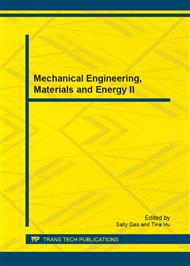p.312
p.319
p.324
p.329
p.335
p.343
p.347
p.351
p.355
An Experimental Study of Sweep Effect on 3D Flow Downstream of Axial Fans at Off-Design Conditions
Abstract:
The 3D flow characteristics in axial fans with circumferential skewed blades were investigated at off-design conditions using Hot-wire test, and the effect of sweep on controlling the aerodynamic limits was discussed. Two circumferential skewed fans, with the blade skew angles at 8.3° forward and backward, respectively, were investigated in this study. The 3D instantaneous velocity components in nearfield, downstream of the fans were measured using Hot-wire Anemometry (CTA) at off-design conditions. From the measured results, the structure of passage flow in circumferential skewed fans is analyzed according to flow rate. The boundary layer flow and its relation with circumferential skewed blades, to expand stall-free operation range of axial fans, were discussed. As flow rate decreases, the 3D flow structure in blade passage is controlled by the circumferential skewed blades, and the obvious suppression of decreasing passage flow near shroud and hub region; the main flow retains at mid blade span; the radial flow can’t be neglected; the forward-skewed blade is found to be effective in controlling low energy flow in the vicinity of shroud and hub to expand stall-free operation range; the effect of skewed blades on boundary layer is discussed by radial equilibrium equation; as the centrifugal force increases, the blade radial force Fr of the circumferential forward-skewed blade has an positive effect on pressure gradient, and seems to be efficient to control the style and velocity of boundary layer movement.
Info:
Periodical:
Pages:
335-342
Citation:
Online since:
January 2013
Authors:
Price:
Сopyright:
© 2013 Trans Tech Publications Ltd. All Rights Reserved
Share:
Citation:


